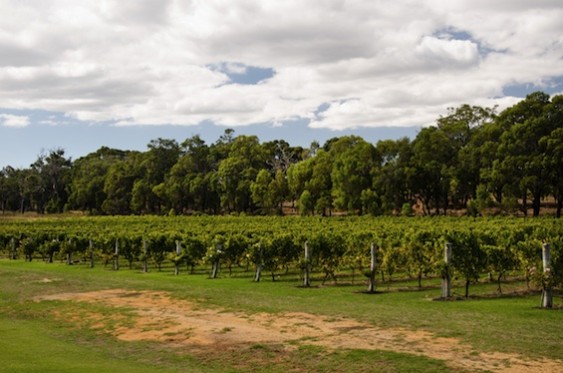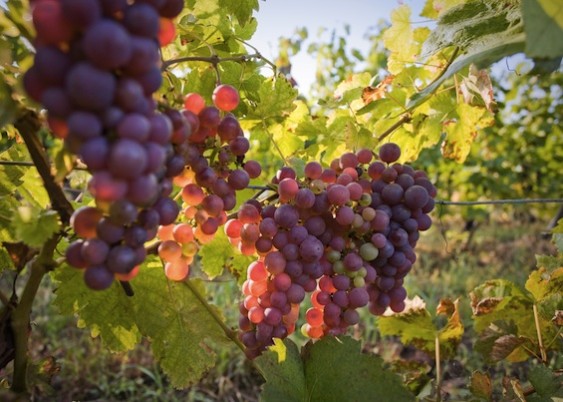Pinot Noir, Pinot Noir, wherefore art thou Pinot Noir? Apologies to the Bard of Avon, but the question of names posed by Juliet might just as well be about some of the world’s best-known grape varieties. Here are some varieties you might already know and what they’re called in other parts of the world.
Grenache/Garnacha
Let’s start out simply, shall we? It doesn’t take a wine scientist to figure that these two are the same grape. It just depends on which side of the French-Spanish border you’re on. That said, in the French- and English-speaking world like New Zealand and the U.S., the grape is still called Grenache, while in the Spanish speaking world, such as Chile or Argentina, you’ll hear it called by its Iberian moniker. Oh, and hey, if you’re in Italy, you might see it referred to as Cannonau.

In Australia, they call Syrah Shiraz and Mourvèdre Mataro.
Mourvèdre/Monastrell/Mataro
You might detect another Franco-Spanic spat over the naming of this grape, with an oddball name from Portugal thrown in. Mourvèdre is what you’ll find in France’s Rhône Valley, while Monastrell comes from Spain’s northeast. Meanwhile, in Portugal and Australia, it’s also known as Mataro (pronounced Mah-TAR-oh). So if you’ve drunk so much wine you forget which country you’re in, just ask what they call this grape, and it should clear matters up.
Syrah/Shiraz
In France (and most other places), they call it Syrah. In Australia, it’s Shiraz. Sometimes pronouncing the “z” and sometimes not. The origins of the name are a bit of a mystery, with some pointing to its derivation from the town name of Syracuse in Sicily, while others claim that the wine originated in the city of Shiraz in what is now Iran, where the wines were famous in ancient times. Whatever the true origins, these grapes are one and the same, though the style and taste can vary widely depending on where it is grown and made into wine.
Zinfandel/Primitivo/Crljenak
To be honest, there are slight genetic differences here, but it took a Croatian immigrant to California, the famous winemaker Mike Grgich, to realize that the Zinfandel he was growing in Napa tasted an awful lot like the Crljenak from his native land, and the Primitivo from across the Adriatic in Italy. Science has since verified this supposition…but has not streamlined the naming.

Pinot Gris/Grigio gets its name from the fact that the berries are a gray-ish pink.
Pinot Gris/Pinot Grigio
One’s French and one’s Italian, but really, they’re just the same grape. The gris or grigio in the name, depending on which country’s wine you’re drinking, means “gray” and refers to the grape’s gray-ish-pink-ish skin. In France, you’ll find Pinot Gris mostly in the region of Alsace, where the style is richer, with some spices and winter fruit notes. They also use it to make sweet wines from time to time. The Italian version has been made most famous in the northern Alto Adige region, and is lighter-bodied, with more acidity and freshness to it. Today, when winemakers in different parts of the world call their wine one or the other, they’re usually referring to the style in which it’s made. Gris for fuller-bodied and Grigio for lighter-bodied.
Sauvignon Blanc/Fumé Blanc
You’re starting to see the name Fumé Blanc less and less as time goes on, but basically the back story for this Sauvignon Blanc synonym is this: Robert Mondavi wanted to sell Sauvignon Blanc at a time when the variety was not very popular in the US, so he invented a new name for it. That said, he wasn’t totally off base. In France’s Loire Valley, one of the most famous Sauvignon Blanc-production appellations is Pouilly-Fumé, so Mondavi named his new wine as a sort of homage. For your Francophones, you might know that fumé itself means “smoked” in French. But that has nothing to do with the wine. Rather it’s a reference to the famous smoke-like fogs that blanket the Loire vineyards in the mornings, helping make it one of the world’s great cool-climate wine regions.

When they make Pinot Noir in Germany, they call it Spätburgunder.
Pinot Noir/Blauburgunder/Spätburgunder/Pinot Nero/Nagyburgundi
As you might recall from my article of useful facts about Burgundy wines, the predominant red variety in that famous French region is Pinot Noir. Hence the derivation of its various names in German-speaking wine countries, which contain the word burgunder, for Burgundian. In Austria and Switzerland, you’ll hear Pinot Noir referred to as Blauburgunder, or “blue Burgundian,” referring to the dark grapes from Burgundy. In Germany, the variety is often called Spätburgunder, or “late Burgundian,” owing to the fact that it generally ripened later than other varieties. You’ll also notice the reference to Burgundy in the name Hungarians have given this grape, Nagyburgundi. And in northern Italian regions like the Südtirol and the Veneto, they just refer to it as Pinot Nero.
Those are just a few common examples of grapes that go by different aliases depending on who is growing them, and ones you’re most likely to come across on a restaurant wine list or in your travels. But there are plenty more, so stay tuned for future installments. In the meantime, feel free to tweet me your wine questions @clustercrush.

